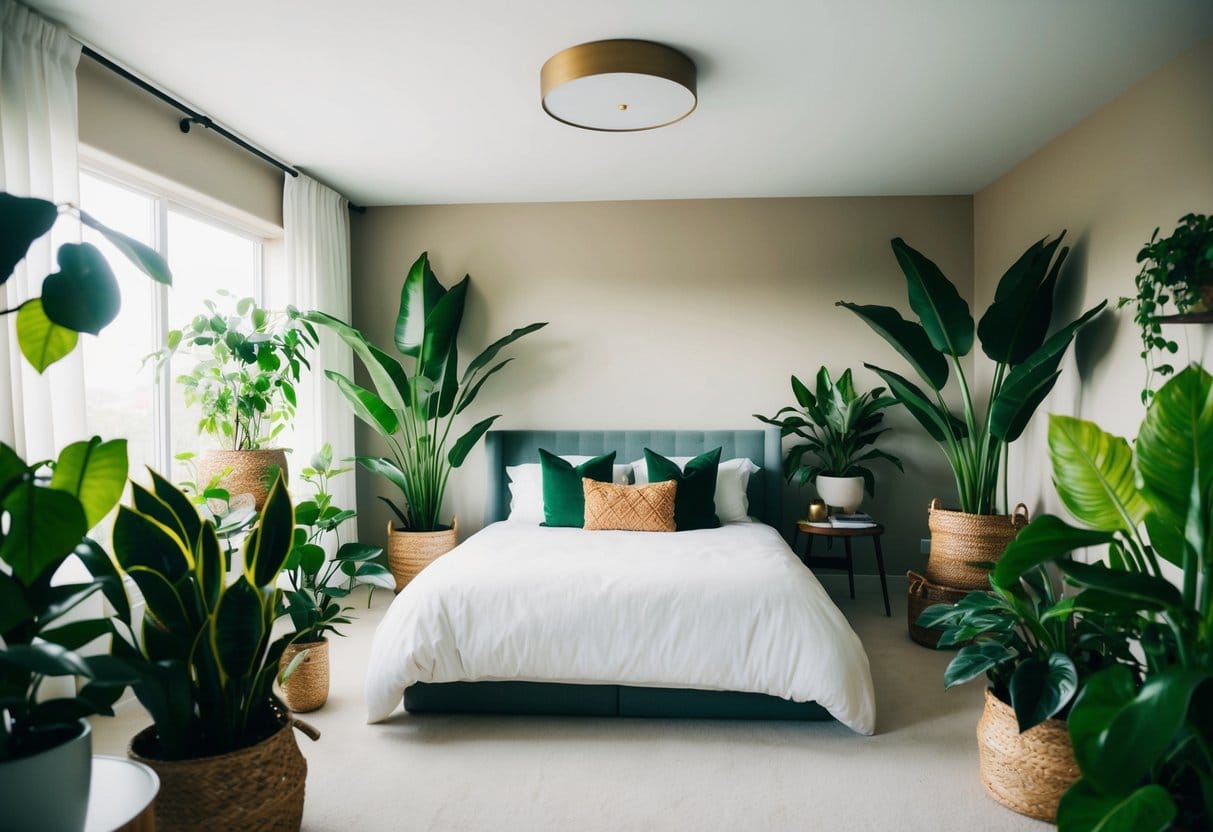For plant enthusiasts, integrating greenery into the bedroom can enhance both aesthetics and well-being. The calming presence of plants can provide a sense of peace, especially at night. Certain plants contribute unique health benefits, from purifying the air to promoting relaxation. Here is a detailed look at some top choices that are ideal for bedroom environments.
1. Jasmine
Jasmine is a flowering plant acclaimed for its delightful fragrance. It helps alleviate stress and anxiety while improving sleep quality. Keeping jasmine in the bedroom can create a calming atmosphere conducive to relaxation.
2. Orchid
Orchids are popular choices for indoor décor due to their stunning beauty. Beyond aesthetics, they enhance air quality and promote restful sleep. Their soothing properties can help lower anxiety and improve mood, making them a wonderful addition to any bedroom.
3. Lavender
Lavender is renowned for its calming scent and striking appearance. It is known to promote relaxation and has multiple healing properties. Incorporating lavender into the bedroom can reduce anxiety and improve overall sleep quality.
4. Gardenia
Gardenia plants are prized for their beautiful blooms and calming effects. In addition to their visual appeal, gardenias can help reduce anxiety and facilitate restful nights. This makes them a strong candidate for those seeking both beauty and serenity in their space.
5. Aloe Vera
Aloe vera is known for its healing properties, particularly for skin care. In the bedroom, it contributes to air purification by releasing oxygen at night. Its multifaceted benefits make it not just a decorative option but a practical one as well.
6. Pothos
Pothos is a flexible plant that can thrive in soil or water. Its ability to filter out volatile organic compounds (VOCs) makes it an excellent choice for those who want to improve indoor air quality. Low maintenance and resilient, pothos is ideal for busy lifestyles.
7. Peace Lily
The peace lily is favored for its resilience and air-cleaning capabilities. It effectively removes harmful toxins and enhances humidity levels, promoting a healthier indoor environment. Its easy care requirements make it suitable for anyone looking to add greenery without much fuss.
8. Areca Palm
The areca palm is known for its ability to increase humidity and oxygen levels in the bedroom. This plant may help alleviate allergies and respiratory discomfort, making it a great companion for those suffering from asthma or colds.
9. Boston Fern
Boston ferns are among the best plants for air purification. Their natural ability to filter out toxins like formaldehyde can lead to a healthier sleeping space. Boston ferns thrive in moist conditions, adding a touch of freshness to the environment.
10. Snake Plant
The snake plant is a favored choice for its air purifying abilities. It absorbs toxins and converts carbon dioxide into oxygen, even at night. Its robust nature makes it a perfect plant for beginners, requiring minimal care.
11. English Ivy
English ivy is versatile and easy to grow, suitable both in soil and water. Its ability to reduce carbon dioxide levels and absorb formaldehyde makes it beneficial for maintaining indoor air quality. Additionally, it helps minimize airborne mold.
12. Spider Plant
Spider plants are low-maintenance and effective at purifying the air. Their natural filtering capabilities help absorb unwanted odors, contributing to a fresh environment. Spider plants can thrive readily with proper light and periodic watering.
Other Notable Mentions:
- Ficus Lyrata (Fiddle Leaf Fig): Features broad leaves and is effective in improving air quality.
- Philodendron: Popular for its adaptability and low-light tolerance, offering a tropical feel.
- Rubber Plant (Ficus Elastica): Known for its air-purifying qualities and sturdy structure.
- Chinese Evergreen: This plant thrives in low-light conditions and is easy to care for.
- Money Tree (Pachira Aquatica): Often associated with good luck, it also adds greenery effortlessly.
- Dracaena: Available in many varieties, dracaena is known for its striking leaves and ability to remove toxins.
- Lucky Bamboo: Symbolizes good fortune and can enhance tranquility; needs little upkeep.
- Hoya: Known for its waxy leaves and fragrant flowers, it adds unique beauty to bedrooms.
- Prayer Plant (Maranta): Known for its beautiful leaf patterns and responsiveness to light.
- Lady Palm: This hardy plant can enhance indoor air quality while offering a touch of elegance.
Frequently Asked Questions

What are the best plants for purifying the air in a bedroom?
Some of the top plants known for their air-purifying qualities include:
- Snake Plant: Effective at removing toxins and producing oxygen.
- Peace Lily: Known for its ability to filter out harmful chemicals.
- Spider Plant: Great at reducing indoor pollutants and easy to care for.
Which plants are beneficial for better sleep when placed in a bedroom?
Certain plants can help promote better sleep. These include:
- Lavender: Its soothing fragrance can help relax the mind.
- Valerian: Often used for its calming effects on sleep.
- Jasmine: Helps reduce anxiety and enhances sleep quality.
What are some easy-care plants suitable for bedrooms?
For those looking for low-maintenance options, consider:
- Pothos: Grows well in various conditions and needs minimal care.
- ZZ Plant: Tolerates neglect and low light.
- Rubber Plant: Fairly resilient and requires little watering.
Which plants help increase oxygen levels at night in bedrooms?
Some plants are known to release oxygen after dark, such as:
- Aloe Vera: Provides oxygen at night and has healing properties.
- Gerbera Daisy: Contributes to a fresh environment with nighttime oxygen.
- Areca Palm: Known for its ability to purify the air while increasing oxygen.
Can you recommend plants based on Feng Shui for bedrooms?
Plants that align with Feng Shui principles include:
- Bamboo: Represents resilience and flexibility, ideal for good energy.
- Jade Plant: Symbolizes prosperity and is believed to improve energy flow.
- Peace Lily: Promotes harmony and is comforting in a bedroom setting.
What are the ideal plants for bedrooms with low light?
For bedrooms that don’t receive much light, the following plants thrive:
- Snake Plant: Adapts well to low light and is very forgiving.
- Cast Iron Plant: Known for its ability to survive in dark places.
- Philodendron: Flourishes in shadowy areas and requires little light.

